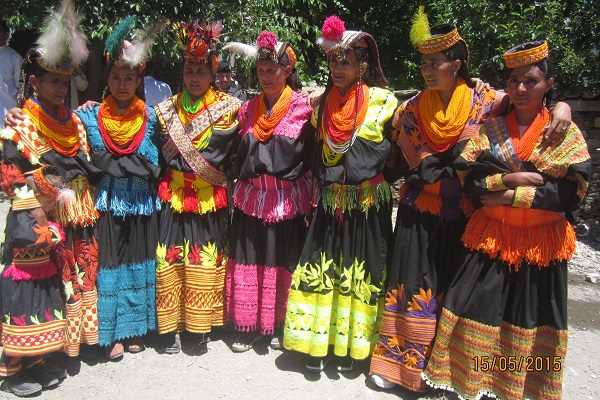Travelling on the rocky mountains of the Kalasha valleys
My name is Elizabeth Mela-Athanasopoulou, Professor of Linguistics-Morphology, School of English, Faculty of Philosophy, Aristotle University, Thessaloniki, Greece.
I. Video Recordings
In the following videos shot by a Kalasha young man, Taleem Khan Bazik, my Kalasha language teacher and consultant, during this long trip of mine in the three Kalasha valleys, Bumburet, Rumbur and Birir, I describe in detail the unapproachable mountains, the narrow paths, the goats, all kinds of trees wedged on the rocks, the river and its torrents, the crystal-clear streams of ice-cold water, the bushy valleys and, of course, the Kalasha dwellings sticking out from the slopes of the mountains.
As my aim was to record the Kalasha language and customs, in this fieldwork research, in order to show (based on primary data) that the language (heavily influenced by Khowar, Urdu, Persian and Arabic) has its roots in Ancient Greek, I had to come into close contact with the Kalasha people: I lived with them in their houses and, respecting their customs and habits, I participated in most of their ceremonies, while, on the other hand, trying to speak their language. Part of my research was presented at the International Conference on Language Documentation and Tradition with special interest in the Kalasha of the Hindu Kush valleys, Himalayas, (ICLDT-Ka), at Aristotle University of Thessaloniki, Greece, in 2008, and at the 1st International Conference on Language Documentation and Preservation (ICLDP), at the University of Hawaii, USA, in 2009. Since then, I have published a Kalasha Grammar Book and a book on the Kalasha people and their traditions, as well as a number of articles in international periodicals on the Kalasha language.
The video of the trip to the remote valley of Birir was very difficult to shoot due to the narrow rocky paths. Our jeep was struggling to move along, only to take me and my team halfway to Birir valley. Then we continued on foot: a breathtaking trekking. In the village of Grabetkui of Birir valley we were offered a warm and genuine hospitality. There, I recorded the Kalasha of Birir: a dialect of the Kalasha language spoken in Birir. In Bumburet and Rumbur, standard Kalasha is spoken (manifested in my recordings shot at these two valleys).
There in Grabetkui village of Birir, a Kalasha woman told me about their habits and customs as well as their celebrations and dances. She confessed to me that she knew how to dance very well. Moreover, a Kalasha man told me a tale of a king and his sons …. while he was surrounded by children absorbing every word of the tale: the greatest pleasure of Kalasha children. All this has been videoed, an invaluable data for my fieldwork research.
II. Sound Recordings
What follows is a selection of some old Kalasha tales (ac'hõ'ik) recorded in 2007 and 2009 during my fieldwork research in the remote villages of all three Kalasha valleys. Together with the native speaker Taleem Khan Bazik, teacher of the Kalasha language , we recorded more than 500 cassettes. My aim was to collect as many tales as possible, as well as descriptions of events, festivals and songs, all referring to the Kalasha tradition – a great amount of primary data for my linguistic investigations. In the most recent cassettes recorded in the Bumburet valley by Taleem Khan during the years 2011 and 2017, I found out , to my amazement, tales similar to Aesop’s fables!
The arduous, and indeed, strenuous work started in Greece while still working at he English Department, Aristotle University. First, the transcription of most of the recorded material had to be attempted: This extremely tedious and time consuming task was utterly done by Taleem Khan. Without him it was entirely impossible to do it myself. What followed was the translation attempted by Taleem Khan and me. The titles of the tales were added during the translation process. The equivalent effect of the translated tales into English was hardly ever achieved, though, due to the astounding differences of the two languages (primarily cultural, e.g. idiomatic expressions or the “unfindable word” in the target language). On the other hand, the words/phrases in bold refer to similarities (both lexical and grammatical) between the Kalasha language and Ancient Greek. Some of these were used as primary data for my linguistic research.
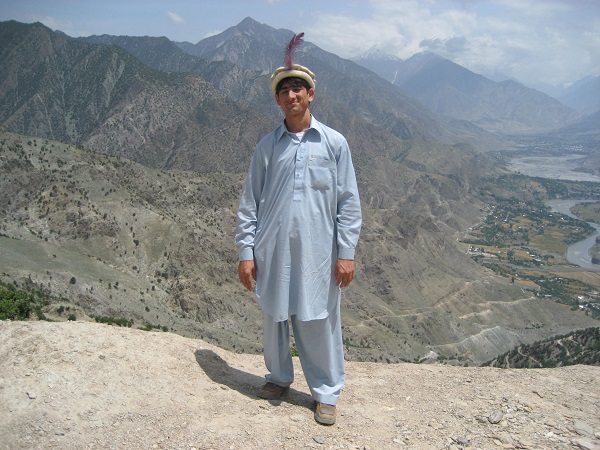
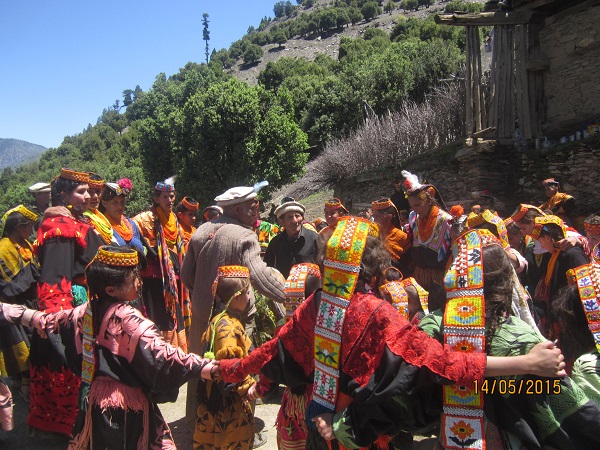
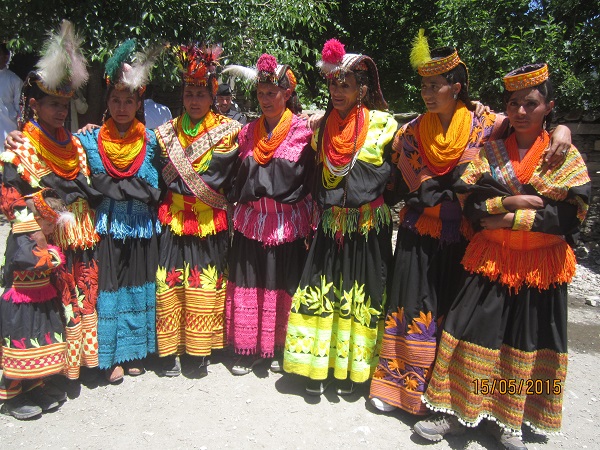
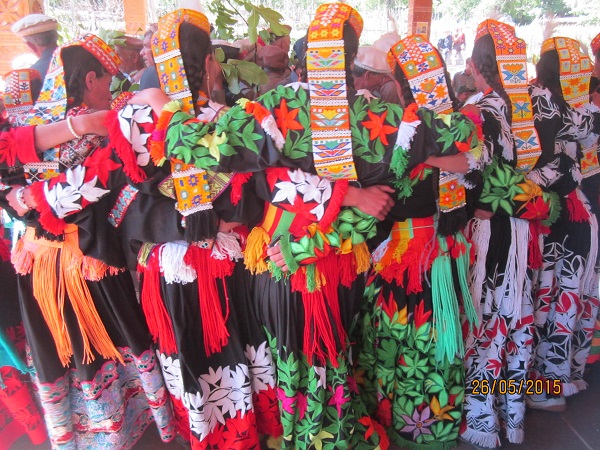
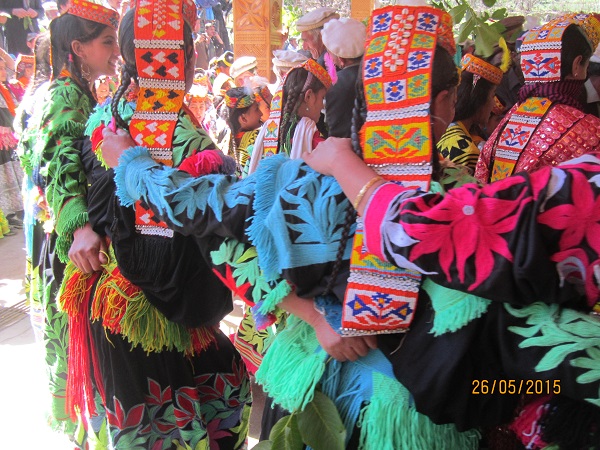

In the following videos the three major Kalasha festivals, the Ucaw (Autumn), the Cawmos (Winter) and the Zhoshi (Spring) are described in detail. Due to adverse weather conditions, I was not able to attend the Winter festival. Therefore the videos of this ceremony were shot by Taleem Khan Bazik. Nevertheless, I witnessed and participated in the Autumn and Spring festivals.
Photos on the Kalasha way of life, customs, and culture are displayed and discussed briefly here.
20 August 2009. Bumburet valley, Hindu Kush mountains, Himalayas. This is the second time I have been to the Kalasha valleys within the framework research on the Kalasha language, as two years ago when conducting a similar research on the Kalasha, I found out that their language has its roots in Ancient Greek. I am here with my team of Kalasha native speakers and intend to travel to the three valleys, Bumburet, Rumbur and Birir, by jeep and, wherever necessary, on foot.
Now walking along a narrow path of the Bumburet valley mountains (3.800m high) I am being videoed by my language consultant Taleem Khan Bazik, a Kalasha native speaker and teacher of the Kalasha language.
The Kalasha live primarily from livestock and in particular the goat, an integral part of their life: They keep their goats in high pastures in the summer and in goat sheds, at a small distance from their houses in the winter. Some families may keep a cow or an ox to use in their small fields. One or two goats are also kept at home for their milk. In a Kalasha house there is no poultry, as they never eat chicken or eggs. They also cultivate corn, joari, (primarily grown by women), or wheat in their small fields.
There are five villages in Bumburet valley: Darasguru, Anish, Brun, Batrik and Krakal. The part of the rocky mountain I am now is called Sarikjew, Siberia, as it is always very cold. The path here –formed by goats- is narrower and very dangerous. Along the path there is a stream of cold spring water.
Like any Kalasha woman I don’t use a walking stick or a cane, despite the steep cliffs. I am now thrilled with the various kinds of trees I come across, their roots wedged in the rocks.
We continue our trip by jeep along a serpentine narrow dirt road to go to the next valley of Rumbur right over the torrential waters of Kunar river. A dangerous trip but worth the risk. The view is breathtaking: precipitous, bare mountains with craggy rocks, all around, the river down in the abyss.
We are now at the top of the mountain. Our destination is Birir valley. Taleem Khan told me that in Birir the Kalasha speak a dialect quite distinct from standard Kalasha spoken in the other two valleys. This is the reason for this risky trip to Birir: to record this dialect. The road is interrupted here by large boulders and foamy streams. So we have to continue on foot. The first village we come across is called Grabetkui where we find a warm welcome. The house we will stay in for a few days is literally hung from the side of the mountain. The house is actually one large square room (windows are rare) with two large beds on either side, and a stove in the middle, burning all year round. Behind the stove there are some shelves on the back wall with kitchen utensils. This part of the room –just behind the stove- is forbidden to women, as it is considered ‘pure’ (Read the notion of ‘pure/impure’ in my 2017 publication). Inside the room there is also a sewing machine, an extremely useful tool for making their clothes. The floor is plain earth. The roof is flat – also made of earth. The toilet is outside, at some distance. Normally a house like this will host about 18 or more people (children inclusive).
I am warmly greeted by the hostess of the house and the recording starts. She talks to me with enthusiasm about her life in the village, the Kalasha festivals, especially Cawmos….how the Kalasha enjoy singing, dancing ‘nat karin’ (they dance) and drinking wine. Then I record a man telling a Kalasha tale: Ek zamanauna, baba…. Once upon a time, sister….
The Birir man continues the tale about the king and his sons while children gather around him hanging from his lips. Then I record a slow Zhoshi song which he sings with passion. As we move to another house for more recordings we can see some children playing with the water in a stream, an enjoyable habit for them.
I have moved to another Kalasha house where my team are waiting for me on the veranda. I am warmly welcomed by a Kalasha woman called Istia. We are offered fresh figs from her own trees she is so proud of. Then we move to the other side of the village to meet more people. I am still amazed by the architecture of the houses, all made of wood, built in an amphitheatrical way with the uppermost ones clinging on the rocky mountains. We are not surprised to see some Kalasha on the roof of their house. The Kalasha find great pleasure to spend some time on the flat roofs. Then we cross the bridge to take a long walk on the twisting path leading to our jeep.




